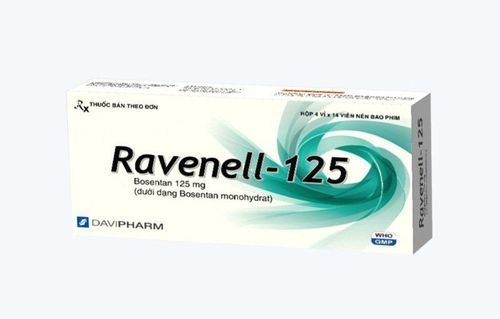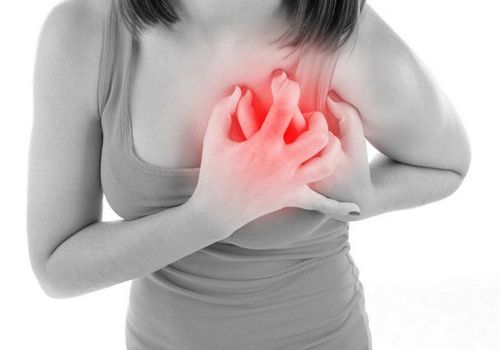This is an automatically translated article.
Posted by Master, Doctor Ho Thi Xuan Nga - Anesthesiologist - Cardiovascular Center - Vinmec Central Park International General Hospital
Heart valves help direct blood flow into and out of the heart. Therefore, when there is a problem with the heart valve, it seriously affects the heart and overall health. The correct implementation of basic principles when anesthetizing patients with valvular heart disease will bring good prognosis and limit complications after anesthesia.
1. Overview of valvular anesthesia
An overview of anesthesia in patients with valvular regurgitation is as follows:1.1 Loading fee
Total blood volume is increased to maintain efficient systemic flow, due to mass loss posteriorly between the ventricles and the atria (T). Blood volume decreases in proportion to systemic flow more than the regurgitated fraction, because atrioventricular valve leaks "steal" volume in the low-pressure system of the left atrium. Tolerability with hypovolemia is low and preload should be kept normal to high.
1.2 Afterload
The ventricle (T) acts as a chamber with two retrograde volume escape routes directly related to contractile function, the RAS must therefore be completely low. Vasodilation is required (isoflurane, nitroprusside, phentolamine).
1.3 Contraction ability
It must be kept high to ensure presystolic flow. Therefore, low systolic function should be suspected and only inotropic agents with no alpha effect (dobutamine, isoprenaline, amrinone, milrinone) should be used. In difficult cases, aortic balloon counterpulsation is very effective in providing ventricular (T) support, reducing mitral regurgitation, and improving coronary perfusion.
1.4 Heart rate
It must be maintained high because bradycardia increases filling time and ventricular volume, hence the risk of acute ventricular dilatation (T). Since mitral regurgitation occurs during systole, the frequency variation does not change its duration much. Maintaining sinus rhythm is important as long as the atria (T) are not dilated much.
1.5 Pulmonary Arterial Resistance
Pulmonary hypertension is frequent but generally moderate; pulmonary vascular system is hyper-reactive; Avoid any pulmonary vasoconstriction (hypoxia, hypercarbia, acidosis, N2O) and maintain ventilation for a pH of 7.5 and a PaCO of 32-35 mmhg.
1.6 Positive pressure ventilation
It improves left-sided flow to the extent that right-sided venous return is still well guaranteed. The emptying of the lung to the atrium (T) is accelerated, the anterior mitral flow increases, and the atrial conduction pressure decreases; reduce ventricular (T) load effectively.

Tổng quan về gây mê bệnh hở van tim
2. Basic principles of anesthesia for valvular stenosis
2.1 Preload
It must be high to ensure sufficient transmural gradient, but the pulmonary vascular bed is inelastic and is chronically overloaded. In cases of hypovolemia or increased venous return (Trendelenburg position) there is a risk of acute pulmonary edema. Hypovolemia is very poorly tolerated because reduced mitral flow is associated with a decrease in atrial pressure (T) and cannot be compensated for by tachycardia.
2.2 Afterload
Systemic vascular resistance should be kept high to compensate for the reduced systolic volume, the contractile function of the ventricles (T) is usually preserved, supporting a later increase in load, and at the same time avoiding any adverse events. any blood vessel dilation. Alpha vasopressors are the best way to maintain systemic pressure during surgery.
2.3 Contraction ability
Ventricular function (T) is preserved, but posterior function has no preload reserve; systolic volume is low and fixed. Beta-catecholamines are used only in relation to an excessive decrease in cardiac output (decrease in SvO2), they are not beneficial for the ventricles (T) for two reasons:
Tachycardia reduces ventricular filling (T) Increases Cardiac output increases the pressure gradient across the mitral and atrial (T) valves. The ventricle (P) is dilated and thickened depending on the degree of pulmonary hypertension, which is impaired in severe pulmonary hypertension. Accordingly, the ventricle (P) benefits the most when using inotropic drugs.
2.4 Heart rate
It is essential to remain low to allow very slow ventricular filling.
2.5 Pulmonary artery pressure
Pre-capillary (arterial vasoconstriction) and post-capillary (venous hypertension) pulmonary hypertension. The risk of arterial vasoconstriction is increased in the presence of hypoxia, hypercapnia, acidosis or N20; Hyperventilation (PetCO2 30 mmhg) is desirable, avoiding high ventilation pressures so as not to increase ventricular afterload (P). Pulmonary vasodilators are indicated based on ventricular failure (P).
2.6 Positive pressure ventilation
It is very beneficial for left-sided flow because venous return to the right heart is still well ensured and ventricular (P) is not impaired. Positive-pressure ventilation increases atrial return (T), reduces atrial infusion pressure, and improves perfusion flow by reducing blood stasis.
The correct implementation of basic principles when anesthetizing patients with valvular heart disease will bring good prognosis and limit complications after anesthesia.
Vinmec International General Hospital is one of the hospitals that strictly applies safe surgical anesthesia practice standards according to international guidelines. With a team of experienced anesthesiologists and nurses, along with modern equipment such as nerve detectors, ultrasound machines, Karl Storz difficult airway control system, anesthesia monitoring system GE's comprehensive AoA (Adequate of Anesthesia) including monitoring of anesthesia, pain and muscle relaxation will deliver high quality and safety, helping patients to have adequate anesthesia, not awake, no residual relaxant muscle after surgery. Vinmec Health System is also proud to be the first hospital in Vietnam to sign with the World Anesthesiology Association (WFSA) towards the goal of becoming the safest hospital for surgical anesthesia in Southeast Asia.
Please dial HOTLINE for more information or register for an appointment HERE. Download MyVinmec app to make appointments faster and to manage your bookings easily.
REFERENCES
BONOW RO, BRAUNWALD E. Valvular heart disease. Print: ZIPES DP, et al, eds. Braunwald's heart disease. A textbook of cardiovascular medicine. 7th edition. Philadelphie: Elsevier Saunders, 2005, 1553-632 BORROW K, GREEN LH, MANN T, et al. End-systolic volume as a predictor of postoperative left ventricular performance in volume overload from valvular regurgitation. Am J Med 1980; 68:655-60 BOUDOULAS H, KOLIBASH, AJ, BAKER P, et al. Mitral valve prolapse and the mitral valve prolapse syndrome: A diagnostic classification and pathogenesis of symptoms. Am Heart J 1989; 118:796-803 BRAUNBERGER E, DELOCHE A, BERREBI A, et al. Very long-term results (more than 20 years) of valve repair with Carpentier‘s techniques in non-rheumatic mitral valve insufficiency. Circulation 2001; 104(suppl I):8-11 BRUCE CJ, CONNOLLY HM. Right-sided valve disease deserves a little more respect. Circulation 2009; 119:2726-34 CARABELLO BA. Aortic stenosis. Cardiol Rev 1993; 1:59-68 CARABELLO BA. Clinical practice: aortic stenosis. N Engl J Med 2002; 346:677-82 CARABELLO BA. Aortic regurgitation: a lesion with similarities to both aortic stenosis and mitral regurgitation. Circulation 1990: 82:1051-3 CLICK RL, ABEL MD, SCHAFF HV. Intraoperative transesophageal echocardiography: 5-year prospective review of impact on surgical management. Mayo Clin Proc 2000; 75:241-7 COHEN DJ, KUNTZ RE, GORDON SPF, et al. Predictors of long-term outcome after percutaneous balloon mitral valvuloplasty. N Engl J Med 1992; 327:1329-35 ENDER J, EIBEL S, MUKHERJEE C, et al. Prediction of the annuloplasty ring size in patients undergoing mitral valve repair using real-time three-dimensional transoesophageal echocardiography. Eur J Echocardiogr 2011; 12:445-53 GRIGIONI F, TRIBOUILLOY C, AVIERINOS JF, et al. Outcomes in mitral regurgitation due to flail leaflets: a multicenter European study. JACC Cardiovasc Imaging 2008; 1:133-41 IUNG B, CACHIER A, BARON G, et al. Decision-making in elderly patients with severe aortic stenosis: why are so many denied surgery ? Eur Heart J 2005; 26:2714-20 MILLER FA. Aortic stenosis: Most cases no longer require invasive hemodynamic study. J Am Coll Cardiol 1989; 13:551-8 MILLER F, CALLAHAN J, TAYLOR C, et al. Normal aortic valve prosthesis hemodynamics: 609 prospective Doppler examination. Circulation 1989; 82:Suppl 2:II-169 NKOMO VT, Gardin JM, SKELTON TN, et al. Burden of valvular heart diseases: a population-based study. Lancet 2006; 368:1005-11 SHAVELLE DM, TAKASU J, BUDOFF MJ, et al. HMG CoA reductase inhibitor (statin) and aortic valve calcium. Lancet 2002; 359:1125-8













